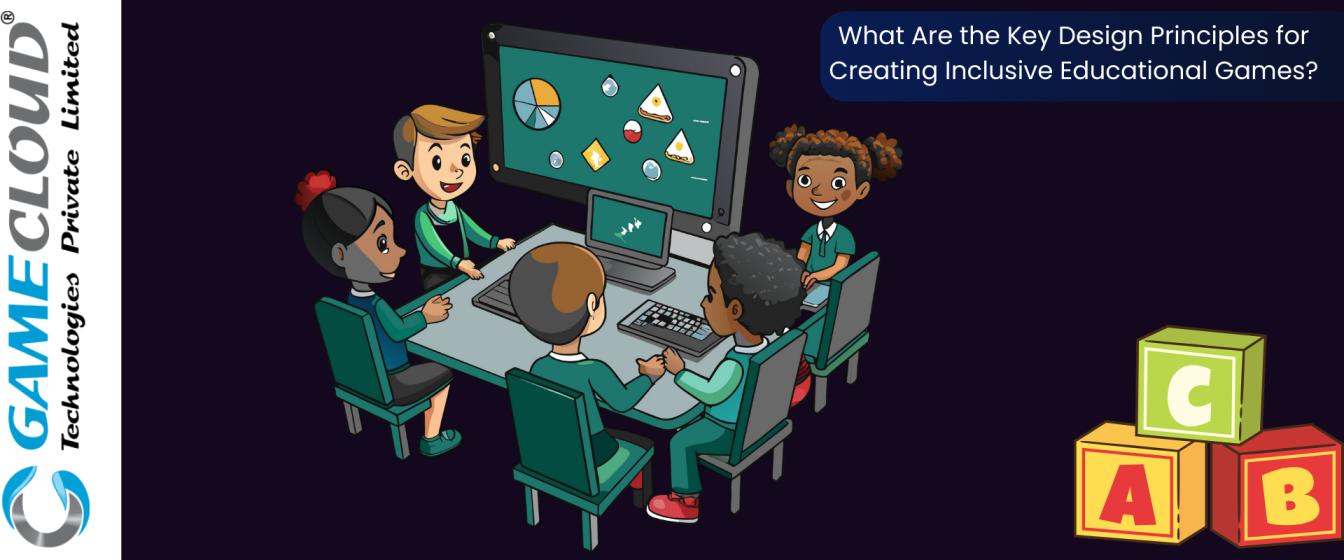
Inclusive educational games are essential for providing equal learning opportunities to all users, regardless of their abilities, backgrounds, or learning styles. These games are designed with accessibility in mind, making sure that diverse learners can engage with content in a meaningful way. By incorporating features such as customizable interfaces, adaptive difficulty levels, and cultural representation, inclusive games ensure users can participate and benefit from the learning experience.
The need for such inclusivity has become increasingly apparent as educational settings embrace diversity. According to research, inclusive education fosters empathy, collaboration, and understanding among students, leading to more positive learning outcomes. For instance, studies show that when learners from various backgrounds are included in the same learning environment, academic performance improves, and a stronger sense of community is developed.
Understanding Inclusivity in Educational Games
Inclusivity in educational games ensures that all learners, regardless of their abilities or backgrounds, can participate and benefit from the experience. It goes beyond accessibility by creating a welcoming environment for everyone, ensuring that games are engaging and meaningful for a diverse audience.
- Accessibility refers to designing games so they can be played by users with physical, sensory, or cognitive impairments. This includes features such as screen readers, adjustable controls, and visual aids.
- Adaptability allows games to be customized based on individual needs, such as adjusting difficulty levels or offering multiple language options.
- Cultural Sensitivity ensures that games reflect diverse cultures and experiences, avoiding stereotypes while promoting positive representation.
Key Design Principles for Inclusivity
Creating inclusive educational games requires thoughtful design that caters to all learners. Accessibility and usability are fundamental; games must be designed to accommodate users with physical, sensory, or cognitive disabilities. This can include features like screen readers, keyboard-only navigation, and closed captions. Clear instructions and intuitive user interfaces are crucial for helping all players navigate the game easily.
Customization and adaptability are also vital. Providing options for language preferences and adjustable difficulty levels allows learners to engage at their own pace. Games should adapt based on player progress, ensuring each individual’s learning needs are met.
Finally, cultural and social inclusion should be prioritized. Representing diverse cultures, languages, and backgrounds in game content fosters a sense of belonging and encourages positive social interactions. This approach not only enhances engagement but also promotes empathy and understanding among players, making the educational experience richer and more impactful.
Refining Gaming: LolzSoft’s Creative Path Forward
At LolzSoft, we’re committed to transforming unique ideas into captivating gaming experiences that not only entertain but also educate and inspire our players. We continue to embrace GameCloud’s legacy by pushing the boundaries of video game design, ensuring our games are both enjoyable and impactful. We’re always on the lookout for creative talents to join our team and help us innovate further in the gaming world.
Conclusion
Inclusivity in educational games is vital for fostering equal learning opportunities. By prioritizing accessibility, adaptability, and cultural representation, educators, developers, and stakeholders can create engaging experiences that enhance learning outcomes. Embracing inclusivity ensures that every learner feels valued and empowered to succeed.
For Know More Contact-Now
FAQ: What Are the Key Design Principles for Creating Inclusive Educational Games?
1. What are inclusive educational games?
Inclusive educational games are designed to provide equal learning opportunities for all users, regardless of their abilities, backgrounds, or learning styles. These games prioritize accessibility and adaptability, allowing diverse learners to engage meaningfully with the content. Features such as customizable interfaces, adaptive difficulty levels, and cultural representation help ensure that all users can participate and benefit from the educational experience.
2. Why is inclusivity important in educational games?
Inclusivity is crucial in educational games because it fosters a welcoming environment where all learners can thrive. By embracing diversity, inclusive games promote empathy, collaboration, and understanding among students, leading to improved academic performance and a stronger sense of community. Ensuring that games cater to various abilities and backgrounds enhances the overall learning outcomes for all players.
3. What are some key design principles for creating inclusive educational games?
Key design principles for inclusive educational games include:
- Accessibility: Incorporating features like screen readers, keyboard navigation, and closed captions to accommodate users with physical, sensory, or cognitive disabilities.
- Adaptability: Allowing customization of language preferences and adjustable difficulty levels, enabling learners to engage at their own pace.
- Cultural Sensitivity: Representing diverse cultures and experiences in game content to foster positive social interactions and promote empathy.
4. How can educational games be made more accessible?
To make educational games more accessible, developers should focus on implementing features that support users with different abilities. This includes providing clear instructions, intuitive user interfaces, and options for screen readers. Additionally, offering multiple control schemes and visual aids, as well as ensuring compatibility with assistive technologies, can significantly enhance accessibility for all players.
5. What role does cultural representation play in inclusive educational games?
Cultural representation plays a vital role in inclusive educational games by reflecting diverse backgrounds and experiences. This approach helps avoid stereotypes while promoting positive representation, which fosters a sense of belonging among players. By incorporating various cultures and languages into the game content, developers can encourage empathy and understanding, enriching the educational experience for all learners.
